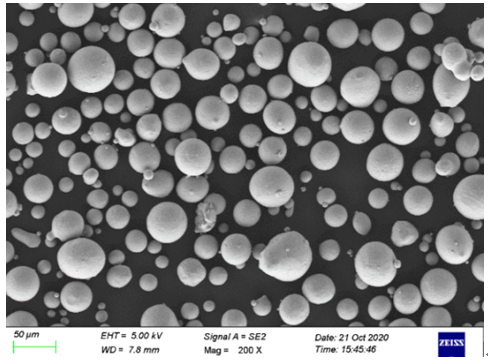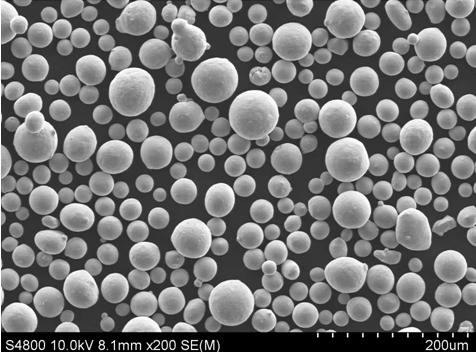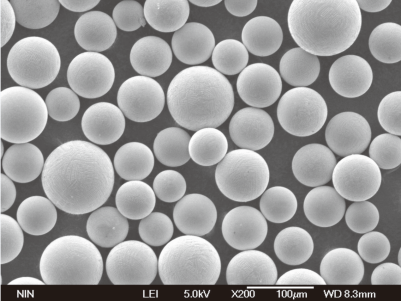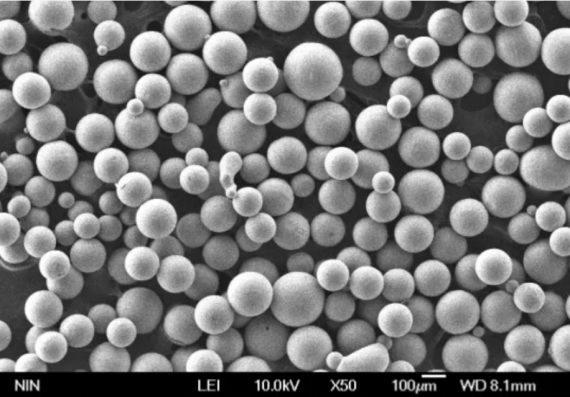개요 금속 사출 성형 (MIM)
금속 사출 성형(MIM)은 플라스틱 사출 성형의 다재다능함과 금속의 강도와 무결성을 결합한 획기적인 제조 공정입니다. 이는 비용 효율적이고 고정밀 솔루션을 제공하여 작고 복잡한 금속 부품 생산에 혁명을 일으킨 기술입니다.
여러 가공 공정이 필요한 복잡한 부품을 단일 단계로 생산하는 편리함을 상상해 보십시오. 그것이 MIM의 마법입니다. 이 공정은 정밀성, 일관성 및 성능이 필수적인 항공 우주, 의료 기기, 자동차 및 소비재 전자 제품과 같은 산업에서 특히 유용합니다.
하지만 금속 사출 성형이란 정확히 무엇일까요? 어떻게 작동합니까? 사용되는 재료는 무엇이며, 다양한 산업 분야에서 인기를 얻고 있는 이유는 무엇일까요? 이 혁신적인 기술의 복잡성을 밝히기 위해 MIM의 세계를 더 깊이 탐구해 보겠습니다.

금속 사출 성형 공정 설명
자세한 내용을 살펴보기 전에 MIM 공정을 소화 가능한 덩어리로 나누어 보겠습니다.
- 공급 원료 준비: 공정은 공급 원료 준비로 시작됩니다. 금속 분말은 열가소성 바인더와 혼합되어 균질한 혼합물을 형성합니다. 그런 다음 이 혼합물을 과립화하여 사출 성형기에 공급할 수 있는 펠릿으로 만듭니다.
- 사출 성형: 공급 원료 펠릿은 가열되어 금형 캐비티에 주입되어 원하는 부품의 모양을 갖습니다. 이 단계는 기존 플라스틱 사출 성형과 매우 유사하지만 금속 분말의 무결성을 유지해야 하는 과제가 추가됩니다.
- 디바인딩: 부품이 성형된 후 금속 입자를 함께 고정하는 바인더를 제거해야 합니다. 이는 디바인딩이라고 하는 공정을 통해 수행되며, 부품을 제어된 환경에서 가열하여 바인더를 증발시키거나 용해시킵니다.
- 소결: 마지막 단계는 디바인딩된 부품을 고온에서 소결하여 금속 입자를 함께 융합하여 조밀하고 단단한 금속 부품을 만드는 것입니다. 소결 공정으로 인해 부품이 수축되므로 최종 치수가 정확하도록 설계 단계에서 신중하게 고려됩니다.
- 후처리: 응용 분야에 따라 소결된 부품은 특성이나 마감을 향상시키기 위해 가공, 표면 처리 또는 열처리와 같은 추가 공정을 거칠 수 있습니다.
장점 금속 사출 성형
그렇다면 MIM이 많은 제조업체에서 선호하는 공정이 된 이유는 무엇일까요? 다음은 몇 가지 설득력 있는 이유입니다.
- 복잡성 및 정밀도: MIM을 사용하면 기존 금속 가공 방법으로는 달성하기 어렵거나 불가능한 좁은 공차로 고도로 복잡한 형상을 생산할 수 있습니다.
- 다양한 소재: 스테인리스강, 공구강, 티타늄 및 초합금을 포함하여 MIM에 다양한 금속 분말을 사용할 수 있습니다. 이러한 유연성을 통해 제조업체는 특정 응용 분야에 가장 적합한 재료를 선택할 수 있습니다.
- 대량 생산에 대한 비용 효율성: 툴링 및 공급 원료 준비에 대한 초기 비용은 높지만 MIM은 대량의 부품을 생산할 때 매우 비용 효율적입니다. 단일 성형 사이클에서 여러 부품을 생산할 수 있는 능력은 비용을 더욱 절감합니다.
- 최소 폐기물: MIM은 거의 순형상 공정으로, 부품에 추가 가공이 거의 또는 전혀 필요하지 않음을 의미합니다. 이는 최소한의 재료 폐기물을 초래하여 환경 친화적인 옵션입니다.
- 향상된 기계적 특성: MIM 부품은 소결 중에 얻은 미세 구조 덕분에 다른 제조 방법으로 만들어진 부품에 비해 우수한 기계적 특성을 나타내는 경우가 많습니다.
MIM에 사용되는 금속 분말의 종류
금속 분말의 선택은 MIM 공정에서 매우 중요하며, 최종 부품의 기계적 특성, 표면 마감 및 전반적인 성능에 직접적인 영향을 미칩니다. 다음은 MIM에서 가장 일반적으로 사용되는 금속 분말 중 일부입니다.
| 금속 분말 | 구성 | 속성 | 애플리케이션 |
|---|---|---|---|
| 316L 스테인리스 스틸 | Fe-Cr-Ni-Mo | 높은 내식성, 우수한 기계적 강도 | 의료 기기, 시계 부품, 식품 가공 장비 |
| 17-4 PH 스테인리스 스틸 | Fe-Cr-Ni-Cu | 고강도, 뛰어난 내식성, 우수한 경도 | 항공 우주, 총기, 수술 도구 |
| 440C 스테인리스강 | Fe-Cr-C | 높은 경도, 우수한 내마모성, 적당한 내식성 | 베어링, 칼, 밸브 |
| M2 공구강 | Fe-Cr-Mo-W-V | 높은 경도, 뛰어난 내마모성, 고온 안정성 | 절삭 공구, 금형, 금형 |
| 인코넬 718 | Ni-Cr-Fe-Nb-Mo-Ti | 고온 저항, 뛰어난 기계적 강도 | 항공 우주, 터빈 블레이드, 원자로 |
| 티타늄 Ti-6Al-4V | Ti-Al-V | 높은 중량 대비 강도, 우수한 내식성, 생체 적합성 | 의료 임플란트, 항공 우주, 해양 응용 분야 |
| 구리(C11000) | Cu | 높은 전기 전도성, 우수한 열 전도성, 뛰어난 가단성 | 전기 커넥터, 열 교환기, 배관 |
| 코바(FeNiCo) | Fe-Ni-Co | 낮은 열팽창, 우수한 자기적 특성 | 전자 제품, 유리-금속 씰, 반도체 패키징 |
| 텅스텐(W) | W | 고밀도, 높은 융점, 우수한 열 및 전기 전도성 | 방사선 차폐, 고온로, 항공 우주 부품 |
| 코발트-크롬(Co-Cr) | Co-Cr-Mo | 높은 내마모성, 뛰어난 생체 적합성, 우수한 기계적 특성 | 정형외과 임플란트, 치과 보철물, 터빈 블레이드 |
이러한 금속 분말은 MIM 공정과의 호환성 및 최종 부품의 특정 요구 사항에 따라 선택됩니다. 예를 들어, 스테인리스강은 내식성 때문에 인기가 있는 반면, 공구강은 경도와 내마모성 때문에 선택됩니다.






MIM 재료의 조성 및 특성
금속 분말과 바인더 혼합물의 조성은 최종 MIM 부품의 특성을 결정하는 데 중요한 역할을 합니다. MIM 재료의 주요 특성을 자세히 살펴보겠습니다.
| 특징 | 설명 |
|---|---|
| 입자 크기 | 일반적으로 2-20미크론 범위의 입자 크기를 갖는 미세 분말이 MIM에 사용됩니다. 작은 입자는 더 나은 소결성을 제공하지만 더 복잡한 디바인딩 공정이 필요할 수 있습니다. |
| 바인더 시스템 | 바인더 시스템은 일반적으로 성형 중에 금속 분말을 함께 고정하는 폴리머와 왁스의 혼합물입니다. 바인더는 부품을 손상시키지 않고 제거할 수 있도록 신중하게 배합해야 합니다. |
| 소결 거동 | 소결 온도와 시간은 부품의 최종 밀도, 입자 크기 및 기계적 특성에 영향을 미치는 중요한 매개변수입니다. 금속마다 다른 소결 조건이 필요합니다. |
| 밀도 | MIM 부품은 일반적으로 기본 금속의 이론적 밀도의 95%에서 99% 사이의 밀도를 달성합니다. 밀도가 높을수록 기계적 특성이 향상됩니다. |
| 수축 | 부품은 일반적으로 소결 중에 15-20% 수축합니다. 원하는 최종 치수를 얻으려면 수축을 정확하게 예측하고 제어하는 것이 필수적입니다. |
| 기계적 특성 | MIM 부품은 높은 인 |
| 표면 마감 | MIM 부품의 표면 마감은 일반적으로 매끄럽고, 전형적인 거칠기 값(Ra)은 1-5 마이크론 범위입니다. 후처리를 통해 마감을 더욱 개선할 수 있습니다. |
애플리케이션 금속 사출 성형
MIM은 다양한 산업 분야에 적용되는 다재다능한 기술입니다. 다음은 가장 일반적인 사용 사례입니다.
| 산업 | 애플리케이션 | 예제 |
|---|---|---|
| 항공우주 | 고강도 경량 부품 | 터빈 블레이드, 연료 노즐, 패스너 |
| 의료 | 생체 적합성 임플란트 및 수술 도구 | 정형외과 임플란트, 치아 교정기, 내시경 기구 |
| 자동차 | 엔진 및 변속기용 정밀 부품 | 기어, 센서, 연료 분사기 |
| 소비자 가전 | 높은 내구성을 가진 작고 복잡한 부품 | 스마트폰 부품, 카메라 렌즈, 커넥터 |
| 총기류 | 높은 공차를 가진 고강도 부품 | 방아쇠, 해머, 슬라이드 릴리스 |
| 산업 | 내마모성 공구 및 기계 부품 | 절삭 공구, 펌프 부품, 베어링 |
| 보석 | 복잡하고 장식적인 부품 | 시계 케이스, 걸쇠, 정교한 디자인 |
MIM의 사양, 크기, 등급 및 표준
MIM과 관련하여, 최종 제품이 업계 요구 사항을 충족하도록 제조업체가 준수해야 하는 특정 표준 및 사양이 있습니다. 다음은 요약입니다.
| 사양/표준 | 설명 | 적용 가능한 재료 |
|---|---|---|
| MPIF 표준 35 | MIM 부품의 기계적 특성에 대한 지침 제공 | 다양한 스테인리스강, 공구강, 초합금 |
| ASTM B883 | 의료 기기에 사용되는 MIM 부품에 대한 표준 사양 | 티타늄, 스테인리스강 |
| ISO 22068 | MIM 부품 테스트에 대한 국제 표준 | 모든 MIM 재료 |
| ASME B31.3 | 고압 환경에서 사용되는 MIM 부품에 대한 표준 | 스테인리스강, 니켈 합금 |
| DIN 17440 | 자동차 응용 분야의 MIM 부품에 대한 유럽 표준 | 공구강, 스테인리스강 |
다른 제조 공정과의 금속 사출 성형 비교
금속 사출 성형은 기존의 분말 야금, CNC 가공 또는 주조와 같은 다른 제조 방법과 어떻게 비교될까요? 자세히 살펴보겠습니다.
| 매개변수 | MIM | 기존 분말 야금 | CNC 가공 | 캐스팅 |
|---|---|---|---|---|
| 복잡성 | 높은 복잡성 달성 가능 | 중간 복잡성 | 높은 복잡성, 하지만 더 높은 비용 | 높은 복잡성, 하지만 금형 설계에 의해 제한됨 |
| 재료 낭비 | 최소 폐기물(근사 순형상) | 낭비 감소 | 높은 폐기물(칩 형성) | 중간 폐기물 |
| 생산량 | 대량 생산에 가장 적합 | 중간 규모 생산에 적합 | 소량 생산에 비용 효율적 | 대량 생산에 적합 |
| 허용 오차 | 정밀한 공차 달성 가능 | MIM보다 덜 정밀함 | 매우 정밀한 공차 | 금형 정밀도에 따라 다름 |
| 표면 마감 | 매끄러운 마감 | 거친 마감, 2차 공정 필요 | 뛰어난 마감 | 다양하지만 일반적으로 거침 |
| 비용 | 높은 초기 비용, 낮은 부품당 비용 | 중간 비용 | 높은 비용, 특히 복잡한 부품의 경우 | 중간에서 높은 비용 |
금속 사출 성형 서비스 공급업체 및 가격
MIM 서비스에 적합한 공급업체를 선택하는 것은 최종 부품의 품질, 비용 및 리드 타임에 직접적인 영향을 미치므로 매우 중요합니다. 다음은 주요 공급업체와 가격을 살펴보겠습니다.
| 공급업체 | 위치 | 스페셜티 | 가격(부품당) |
|---|---|---|---|
| Advanced Powder Products | 미국 | 의료 기기, 항공우주 부품 | $5 – $50 |
| ARC 그룹 전 세계 | 미국 | 자동차, 총기류, 산업 응용 분야 | $1 – $30 |
| Indo-MIM | 인도 | 대량 생산, 다양한 재료 | $0.50 – $20 |
| Parmaco | 스위스 | 정밀 부품, 소형 부품 | $2 – $40 |
| Elnik Systems | 독일 | 툴링, 맞춤형 합금 | $10 – $100 |
| ATW Companies | 미국 | 의료, 자동차, 소비재 | $3 – $25 |
| CMG 테크놀로지스 | UK | 맞춤형 MIM 솔루션, 프로토타입 제작 | $2 – $35 |

자주 묻는 질문
| 질문 | 답변 |
|---|---|
| MIM 부품의 일반적인 리드 타임은 어떻게 됩니까? | 리드 타임은 부품의 복잡성과 필요한 수량에 따라 다를 수 있습니다. 일반적으로 새로운 부품의 설계부터 생산까지 약 8-12주가 소요됩니다. |
| MIM을 소량 생산에 사용할 수 있습니까? | MIM은 대량 생산에 더 비용 효율적이지만, 부품의 복잡성과 재료 요구 사항이 초기 비용을 정당화하는 경우 소량 생산에도 사용할 수 있습니다. |
| MIM의 한계는 무엇인가요? | MIM은 소결 중 수축이 심하기 때문에 매우 큰 부품에는 적합하지 않습니다. 또한 후처리 없이 매우 정밀한 공차가 필요한 부품에도 덜 효과적입니다. |
| MIM은 적층 제조(3D 프린팅)와 어떻게 비교됩니까? | MIM은 적층 제조에 비해 더 나은 재료 특성을 제공하며 대량 생산에 더 비용 효율적입니다. 적층 제조는 프로토타입 제작 및 소량의 고도로 맞춤화된 부품에 더 적합합니다. |
| MIM에서 사용할 수 없는 재료는 무엇입니까? | 융점이 매우 높거나 순수 텅스텐 또는 특정 세라믹과 같이 효과적으로 소결할 수 없는 재료는 MIM에 적합하지 않습니다. |

